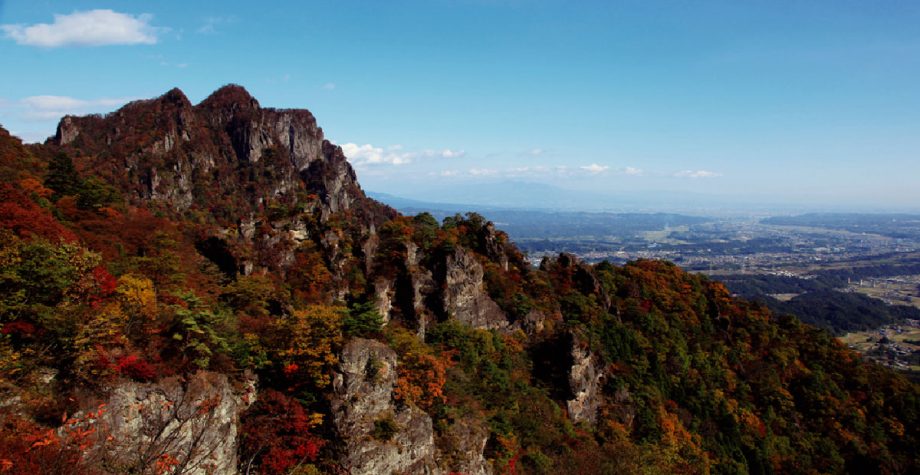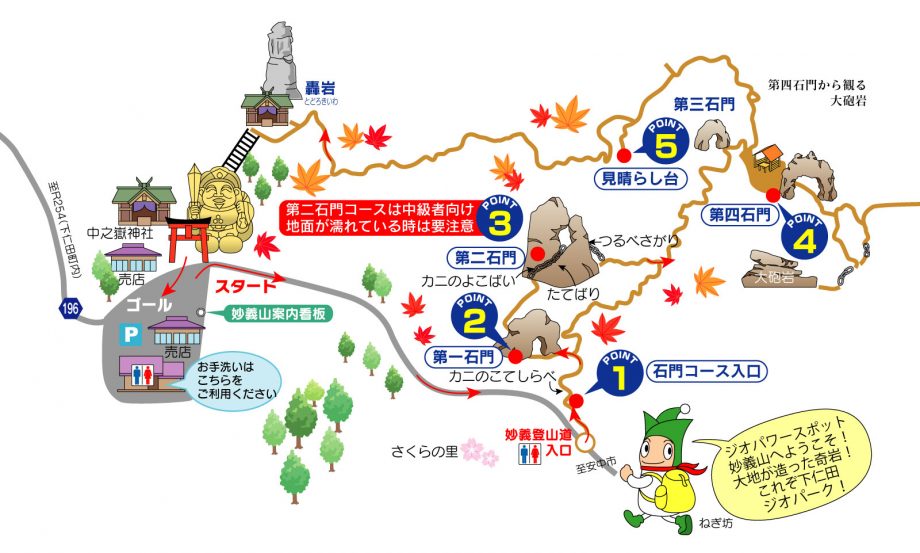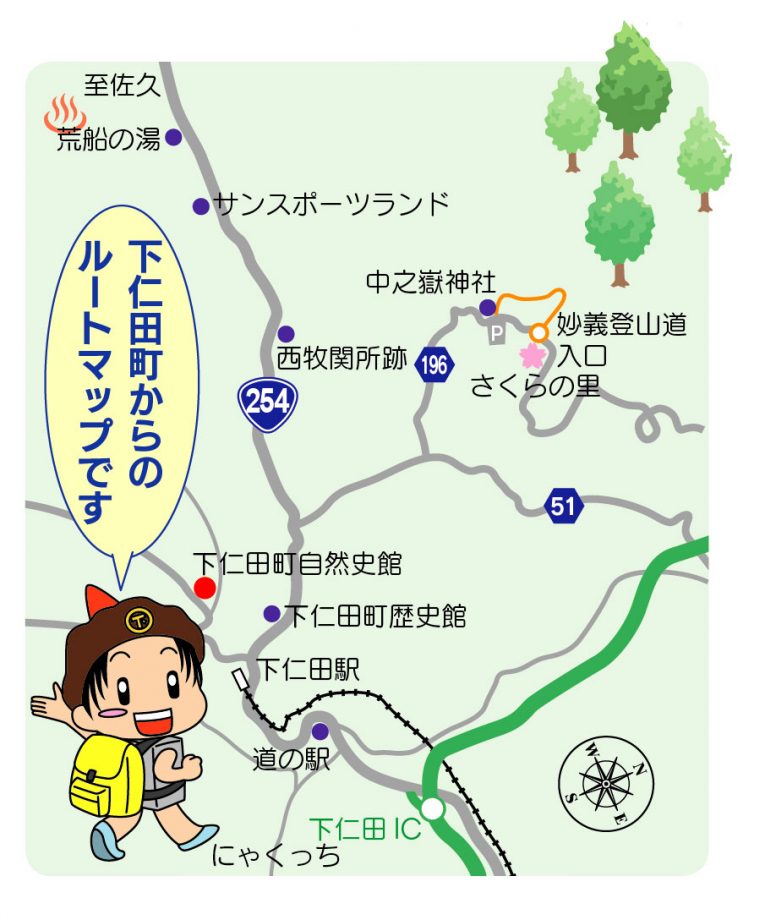Mt. Myogi
A Journey Through the Stone Gates

Mt. Myogi was formed by volcanic activity that occurred approximately 6 to 4 million years ago. Revered as a sacred mountain since ancient times, it has long attracted worshippers and climbers alike. Even during the Edo period, many visitors came to enjoy its rugged beauty. Throughout the mountain, you’ll encounter dramatic rock formations sculpted by nature, such as “Candle Rock” and the famous “Stone Gates”(Known in Japanese as Ishimon, these gate-like formations are among the mountain’s most iconic geological features).
As you explore, take a moment to imagine how these incredible geological features came to be.

(Left) View from Higurashi-no-Kei / (Center) Cannon Rock / (Right) The Fourth Stone Gate seen from a rest area

Point 1: Entrance to the Stone Gate Trail
Look closely at the surrounding rocks—you’ll notice stones embedded within them. These were formed when fragments of lava were caught in volcanic ash during eruptions.
Point 2: The First Stone Gate
This massive natural gate is about 30 meters tall and 15 meters wide. More stone gates lie ahead, so as you walk, think about the geological processes that might have shaped these formations.
Point 3: Crab Walk & The Second Stone Gate
Unlike the others, the Second Stone Gate formed in a slightly different way. A fault line weakened the rock, which was then eroded to create the gate’s opening.
Point 4: The Fourth Stone Gate and Cannon Rock
Beyond the gate, you’ll see Cannon Rock framed perfectly in the distance. This breathtaking natural artwork may one day disappear due to erosion, so be sure to take in the moment while it lasts.
Hike Safely
- Some sections of the trail involve chains and steep terrain. Be sure to wear proper hiking shoes, bring rain gear, enough food and water, and pay close attention to safety. Always follow trail etiquette.
- Beware of bears! Carry a bell or hike in a group to stay safe.

